-
Administrator
Site Admin-

Originally Posted by
MrNovi

The ONLY time it's necessary (or even advantageous) to burn at the slowest speed possible is when you are using any combination of low quality media (think Memorwrecks and other cheap, no name blanks), cheap burner, or poor burning software. If you use a GOOD burner, and they can be had for $15 quite readily; good blanks like Taiyo Yuden, Falcon, Sony that are made in Japan (Sony's made elsewhere are junk), Verbatum with AZO Dye (their others are junk), and a few others, and good software like XFBurn, K3B, or IMGBurn on Windows then you will be better off burning at the disks rated speed (if the burner supports it) or no more than 1 speed slower. Forcing a 24X burner to burn 16-24X disks at 4-6x is foolish and will result in a LOWER QUALITY burn.
Honestly, this MYTH about burning at the slowest speed needs to be put to rest.
And you're dead wrong. I've proven it with Sony and Philips media and with many good name brand burners. My theory about what is happening (and I acknowledge that this is only a theory) is that when burning at high speed lots of error do occur. But since the media format wastes about 25% of actual capacity in storing error correcting codes, the errors that do occur can normally be corrected. so the drive and media manufacturers consider them acceptable. Even in normal cases I don't consider these errors acceptable. I want that excess error correcting data that is saved to be used to correct the "bit rot" that occurs over time. If most or all of it it is used to correct errors that I cause by a high speed burn, then it can't be used to correct additional errors when they do eventually occur. But in the case of Knoppix booting, something else seems to be happening. Discs made at high speed and that seem to read O.K. still fail to boot, while low speed burns boot fine. My theory is that during booting Knoppix is not able to apply the extra software error correction to make up for a bad burn. I would have expected that the reader firmware could do this, but as far as I can determine it does not. So until Linux is actually up and running and in full control of drive reading, you better have a good disc image that can be booted without depending on error correction. Burning at low speed generally acheives this, we have seem here over and over that burning at high speed can make coasters when low speed burning will not.
---
Verifying of md5 checksum and burning a CD at slow speed are important.
-

Originally Posted by
Harry Kuhman

And you're dead wrong. I've proven it with Sony and Philips media and with many good name brand burners. My theory about what is happening (and I acknowledge that this is only a theory) is that when burning at high speed lots of error do occur. But since the media format wastes about 25% of actual capacity in storing error correcting codes, the errors that do occur can normally be corrected. so the drive and media manufacturers consider them acceptable. Even in normal cases I don't consider these errors acceptable. I want that excess error correcting data that is saved to be used to correct the "bit rot" that occurs over time. If most or all of it it is used to correct errors that I cause by a high speed burn, then it can't be used to correct additional errors when they do eventually occur. But in the case of Knoppix booting, something else seems to be happening. Discs made at high speed and that seem to read O.K. still fail to boot, while low speed burns boot fine. My theory is that during booting Knoppix is not able to apply the extra software error correction to make up for a bad burn. I would have expected that the reader firmware could do this, but as far as I can determine it does not. So until Linux is actually up and running and in full control of drive reading, you better have a good disc image that can be booted without depending on error correction. Burning at low speed generally acheives this, we have seem here over and over that burning at high speed can make coasters when low speed burning will not.
And in my opinion you are dead wrong. I and a LOT of other users have proven it. On average I burn 50 or more DVDs and CDs a month and aside from a verified box of defective disks I've only had 2 bad burns in the past 4 years. That includes lots of music cds, dvd movies, operating install and live CDs and DVDs, and general file storage/backup.
The reason why you are wrong is that the blank disks are designed to be burned at a specific speed and burn best at that speed (plus or minus a very small amount). 16x disks will ALWAYS burn best at 16x and possibly 12x. Anything lower and it will produce MORE errors.
10 to 15 years ago it was a good idea to burn as slow as possible as there was no burn proof and computers were slow, single core systems where doing anything else tended to mess things up as it would cause the buffer to run out causing major errors/flaws in the burn. Even with Burn Proof, if that buffer ran out it would provide glitches that error correction might not be able to take care of, especially if the buffer was empty for a prolonged period. The buffer would empty when the source couldn't provide data as fast as the burner was attempting to write. This was caused by slow hard drives and/or slow processors (along with low quality blanks and burners).
Modern multi core systems and hard drives rarely have this sort of problem. As long as you don't empty the buffer you will NOT have a bad burn as long as you are using good quality disks and a good burner. If you are still using a single core system (or a single core P4 with hyperthreading) then the answer isn't to burn slower, but to burn smarter by shutting everything else down during the burn and keeping track of the buffer.
All burning slower did (does) was to attempt to cover up for system that wasn't able to keep the buffer full enough to get a proper high quality burn. While the burn would be better due to the buffer being full, it would still have more errors and be considerably inferior to what the burn would have been if it had been burned at the blank disks rated speed on a system that was properly configured to feed the buffer adequately.
What it boils down to is burning slower address the symptom, not the actual problem. If the system can feed the buffer at the disks rated speed then there is absolutely NO benefit to burning slower than the rated speed, or one notch slower. Burning a 16x disk at 4 or 8x is ridiculous and produces an inferior burn unless that is the fastest speed the burner can actually write at such as slim notebook drives. Otherwise deal with the actual issue/problem, not the symptom.
-
Administrator
Site Admin-
I'm not going to get into a religious holly war with someone who is so certain of his "information" but doesn't seem to have anything to back it up except positive hopes. I also doubt that most readers here know exactly what dye type is used on their Verbatum disks. If you want to believe that Sony discs made in Japan are great but others are junk, I can show you images of Sony discs made in Japan that, within months of first using them looked like frost on the window on a cold winter morning, (and, of course, lost all of the data written to them) some even looked that way as soon as the single package plastic wrap was removed. This has occurred with multiple batches with different product numbers and different labeling, and to a friend as well as to me, indicating that it is not just the environment that I stored them in. It has never happened to me with other brands, only Sony. ImageShack seems to have lost that image, as well as my old free account, so here's a copy at an alternate location: http://i.imgur.com/m3Ut0zS.jpg
I suggest that anyone following this discussion don't take either of us on our word, but rather do some experimenting for themselves. You can track down the tool of your choice for detecting soft errors, I use "VSO Inspector". Then make multiple discs from your ISO. I suggest burning at 4x for a DVD and 4x to 8X for a CD. Go ahead and burn another copy at the maximum rated speed of the media and drive. Label them as to burn speeds and then test each for soft errors. For extra credit, keep both discs around and then do the same tests in six months and a year to see how the slow speed burns compare to the high speed burns for bit rot.
Over the years I've had this discussion many times, either with users who had discs that would not boot at all, or in at least one case I remember the user mentioning how painfully long it was taking to boot Knoppix. Suggestions to burn at low speed are usually resisted, but there are many old posts in these forums where someone has come back and acknowledged that a low speed burn was all that it took to correct their problems.
---
Verifying of md5 checksum and burning a CD at slow speed are important.
 Posting Permissions
Posting Permissions
- You may not post new threads
- You may not post replies
- You may not post attachments
- You may not edit your posts
-
Forum Rules


Lenovo N22 Laptop PC Computer 11.6" Windows 10 4GB RAM 64GB SSD HDMI WiFi
$89.99
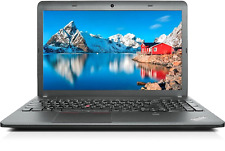
15.6" Lenovo ThinkPad Laptop PC: Intel i5 16GB RAM 512 SSD Windows 10 Webcam
$229.99
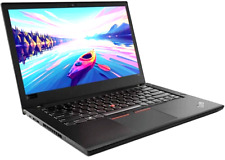
14" Lenovo ThinkPad Laptop: Intel i5 Quad Core 16GB RAM 1TB SSD Windows 11
$249.95
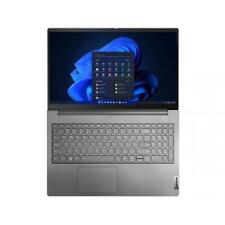
Lenovo ThinkBook 15 Gen 4 Notebook 15.6" FHD AMD R7 5825U 16GB RAM 512GB SSD
$509.99
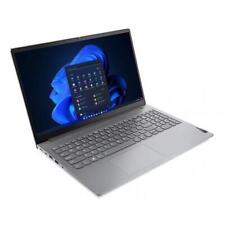
Lenovo ThinkBook 15 Gen 4 Notebook 15.6" FHD Intel Core i7-1255U 8GB RAM
$549.99

Lenovo Ideapad 1i 15.6" FHD Touchscreen Laptop - Intel Core i3-1215U with 8GB...
$279.99
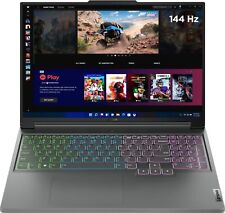
Lenovo - Legion Slim 5 16" Gaming Laptop WUXGA - Ryzen 5 7640HS with 16GB Mem...
$849.99

Lenovo IdeaPad Duet3 10IGL5 2-in-1 Tablet - Intel N5030 8GB 128GB Win 11 Home
$100.00

lenovo legion gaming laptop pro 15arh05 Ryzen 5 15.6 black
$450.00

~OVERSTOCK~ 15.6 Lenovo ThinkPad Laptop: Intel i5 16GB RAM 1TB SSD Windows 10
$309.95




 Reply With Quote
Reply With Quote










